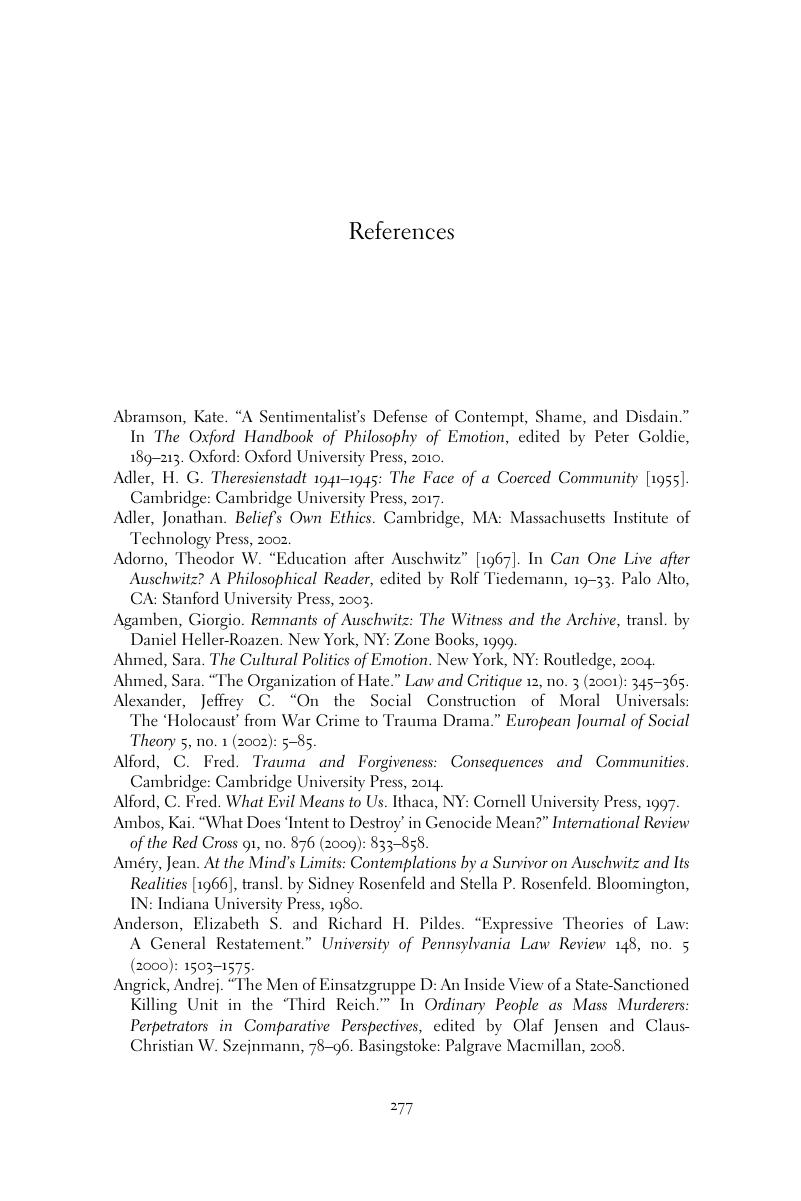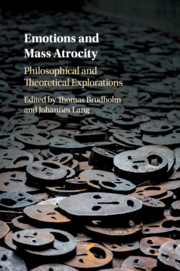References
Published online by Cambridge University Press: 16 March 2018
Summary

- Type
- Chapter
- Information
- Emotions and Mass AtrocityPhilosophical and Theoretical Explorations, pp. 277 - 300Publisher: Cambridge University PressPrint publication year: 2018



